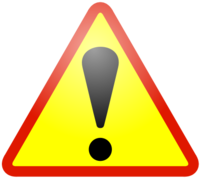Section One
1. Confirmation of Prescriptions
1.1 Diazepam Conversions
1.1.1
Below is a breakdown of the Diazepam equivalents supplied by Mental Health & Addiction Services. Further to my first Report 1, which covered simple prescription history, I would like to clarify the converted Diazepam equivalents of the Benzodiazepines that were prescribed to Wayne. Below is a breakdown for the Benzodiazepine component of the prescriptions (daily dosage):
|
Prescribing Doctor (Hospital) |
Period | Prescription Drugs |
Dose (mg) |
Diazepam Equiv (mg) |
||
| Trade Name | Chemical Name | |||||
| Dr. X (SK Clinic) | 5/7/00 ~ 22/1/01 | Contol | Chlordiazepoxide | 15 | 6 | |
| Rivotril | Clonazepam | 0.9 | 9.0 | |||
| Grandaxin | Tofisopam (10%) | 150 | 6 | |||
| Total Diazepam | 21 | |||||
| Dr. M (O Medical Center) | 23/1/01 ~ 8/4/01 | Rivotril | Clonazepam | 1.2 | 12 | |
| Constan | Alprazolam | 1.2 | 12 | |||
| Total Diazepam | 24 | |||||
NB: As we do not deal with Tofisopam in New Zealand, we have no conversion rate for this drug. Subsequently, the rate included above was based on the Japanese source supplied by Legal Counsel A below in Article 1.1.2, as this drug is more commonly used in Japan.
1.1.2
Below is a breakdown of the Diazepam equivalents supplied by Legal Counsel A:
|
Prescribing Doctor (Hospital) |
Period | Prescription Drugs |
Dose (mg) |
Conv Rate (5) |
Diazepam Equiv (mg) |
|
| Trade Name | Chemical Name | |||||
| Dr. X (SK Clinic) | 5/7/00 ~ 22/1/01 | Contol | Chlordiazepoxide | 15 | 10 | 7.5 |
| Rivotril | Clonazepam | 0.9 | 0.25 | 18 | ||
| Grandaxin | Tofisopam (10%) | 150 | 125 | 6 | ||
| Total Diazepam | 31.5 | |||||
| Dr. M (O Medical Center) | 23/1/01 ~ 8/4/01 | Rivotril | Clonazepam | 1.2 | 0.25 | 24 |
| Constan | Alprazolam | 1.2 | 0.8 | 7.5 | ||
| Total Diazepam | 31.5 | |||||
Top of Page
Notice
- According to the conversion rate in the Ashton Manual, the potency of clonazepam and alprazolam are 20 times that of diazepam (1:20) respectively making 0.9mg of clonazepam equivalent to 18mg of diazepam and 1.2mg of alprazolam equivalent to 24mg of diazepam.
- Based on this, it would appear that Dr. Judson’s total diazepam equivalents shown in article 1.1.1 above were well on the conservative side.
1.2 Reasons for Differing Diazepam Conversions
1.2.1
The rate used for converting Diazepam equivalents tends to differ from source to source. This is because individual variation in clinical responses to “equivalent” doses can vary so close monitoring of patient response to substitution is necessary when converting from one Benzodiazepine to another.
1.2.2
The source of conversion rates used by us here at the Mental Health & Addiction Services is based on the ASAM and TRANX guidelines.
1.2.3
The rate used by Legal Counsel A gives a slightly higher Diazepam conversion than the rate used by us here at Mental Health & Addiction Services. However, it is not unusual to have a slight variation in conversion ranges and more importantly, it does not by any means alter the fact that Wayne became dependent to the doses that were prescribed to him.
Top of Page
1.3 Tofisopam
1.3.1
I understand the defense is claiming that Tofisopam is non-addictive. As mentioned above, we do not deal with Tofisopam in New Zealand, however, Professor Ashton has provided the following information with regards to this.
“All the benzodiazepines are non-selective and act on all types of GABA/benzodiazepine receptors. Valium acts on exactly the same receptors as Klonopin etc. The main reason that benzodiazepines have somewhat different structures is not so much that they act on different receptors (they don't) but so that the drug companies can call them different drugs. They remain chemically benzodiazepines (a chemical name). Although they may differ in binding affinity for the receptors, potency, elimination time, etc., they all act on all subclasses of benzodiazepine receptors. Animal studies have consistently shown that all benzodiazepines are capable of inducing physiological dependence after chronic administration.”
“The drug Tofisopam is a benzodiazepine derivative manufactured in China. It has anxiolytic properties but is said not to have sedative, anticonvulsant, or muscle relaxant properties. I have no experience with this drug but it is almost certain that in some doses within the therapeutic range the drug will turn out to be addictive and, if used long-term, will cause withdrawal symptoms. Non-benzodiazepines which have been claimed to have specific effects (such as zopiclone) have turned out to have all the same actions as benzodiazepines, including dependence (addiction) and withdrawal effects. Furthermore, any drug that alleviates anxiety, (e.g. alcohol, barbiturates and the earlier tranquillizers) is almost certain to cause dependence in some people. Even antidepressant drugs which relieve anxiety cause withdrawal effects when stopped.”
1.3.2
Even if in the case that Tofisopam was not addictive, this argument does not by any means alter the fact that Wayne became dependent, as he was prescribed other Benzodiazepines as well. That is to say, even if the Tofisopam was removed from the equation, the remaining Diazepam equivalent was still sufficient enough to form dependence.
Top of Page
1.4 Addictiveness of Benzodiazepines
1.4.1
As outlined in Article 2.1 of my 3rd report, Professor Ashton has confirmed that it is possible to develop tolerance and dependence on minimal therapeutic doses as low as 2.5~5mg of Diazepam.
1.4.2
It is often assumed that when Benzodiazepines are prescribed legally they must be safe. However, this is not necessarily the case.
1.4.3
Below is a quotation from Professor Malcolm Lader (Professor Lader is an adviser to the World Health Organisation on drugs used in psychiatry).
“It is more difficult to withdraw people from benzodiazepines than it is from heroin. It just seems that the dependency is so ingrained and the withdrawal symptoms you get are so intolerable that people have a great deal of problem coming off. The other aspect is that with heroin, usually the withdrawal is over within a week or so. “With benzodiazepines, a proportion of patients go on to long term withdrawal”
Top of Page
1.5 Breakdown of Reduction Attempts
1.5.1
Below is a breakdown of Wayne’s attempts at reduction.
| No. | Time |
Type of Attempt (Stopping or Reducing) |
Result | Evidence | Doctor |
| # 1 | Late Nov 2000 |
Attempt at stopping (2 consecutive doses) |
Unsuccessful |
See Report 3, Article 2.5.2 Pg 8, Article 9 of Wayne’s first statement |
Dr. X |
| # 2 | 1st Mar 2001 |
Attempt at reducing (1 single dose) |
Unsuccessful |
See Report 3, Article 2.3.4 Pg 10 of O patient file (Evidence Koh A6) |
Dr. M |
| # 3 | 27th Mar 2001 |
Attempt at stopping (2 consecutive doses) |
Unsuccessful |
See Report 3, Article 2.3.6 Pg 11 of O patient file (Evidence Koh A6) |
n/a |
| # 4 | 28th Mar 2001 |
Attempt at reducing (1 single dose) |
Successful, but suffering withdrawal |
Pg 3 of Dr. Whitwell’s file (having problems with withdrawal) |
Dr. Whitwell |
Dr. Whitwell’s patient file supports Report 3, Article 2.3.4 because it shows that Wayne had continued taking the drugs 3 times a day following his 2nd unsuccessful attempt at reduction under Dr. M, despite showing an awareness that they were likely causing harm.
Top of Page
1.6 Formal Reduction History Breakdown
| Mth | Date | Day | Morn (mg) | Noon (mg) | Night (mg) | Dzm Eq (mg) | Notes |
| Mar | 25th | Sun | 0.4/0.4 | 0.4/0.4 | 0.4/0.4 | 24 | Wayne returned to NZ on 0.4mg Clonazepam / 0.4mg Alprazolam 3 x day |
| Mar | 26th | Mon | 0.4/0.4 | 0.4/0.4 | 0.4/0.4 | 24 | |
| Mar | 27th | Tue | 0.4/0.4 | 8 | Wayne reports 3rd attempt at stopping | ||
| Mar | 28th | Wed | 0.4/0.4 | 0.4/0.4 | 16 | Wayne reduced to twice a day | |
| Mar | 29th | Thu | 0.4/0.4 | 0.4/0.4 | 16 | ← Wayne approached Dr. Whitwell, as he was having difficulty with withdrawal. Dr. Whitwell explained that Benzodiazepines are addictive and proceeded with a reduction plan encouraging Wayne to maintain a reduction at twice daily doses. | |
| Mar | 30th | Fri | 0.4/0.4 | 0.4/0.4 | 16 | ||
| Mar | 31st | Sat | 0.4/0.4 | 0.4/0.4 | 16 | ||
| Apr | 1st | Sun | 0.4/0.4 | 0.4/0.4 | 16 | ||
| Apr | 2nd | Mon | 0.4/0.4 | 0.4/0.4 | 16 | ||
| Apr | 3rd | Tue | 0.4/0.4 | 0.4/0.4 | 16 | ||
| Apr | 4th | Wed | 0.4/0.4 | 0.4/0.4 | 16 | ||
| Apr | 5th | Thu | 0.4/0.4 | 0.4/0.4 | 16 | ||
| Apr | 6th | Fri | 0.4/0.4 | 0.4/0.4 | 16 | ||
| Apr | 7th | Sat | 0.4/0.4 | 0.4/0.4 | 16 | ||
| Apr | 8th | Sun | 0.4/0.4 | 0.4/0.4 | 16 | ||
| Apr | 9th | Mon | 0.25 | 0.5 | 7.5 | ← Wayne was further encouraged to reduce and was prescribed Clonazepam (0.5mg x 45 tabs) only. He started taking ½ morn, 1 night. He was then referred to our service as he was having trouble with withdrawal. | |
| Apr | 10 | Tue | 0.25 | 0.5 | 7.5 | ||
| Apr | 11th | Wed | 0.25 | 0.5 | 7.5 | ||
| Apr | 12th | Thu | 0.25 | 0.5 | 7.5 | ||
| Apr | 13th | Fri | 0.25 | 0.5 | 7.5 | ||
| Apr | 14th | Sat | 0.25 | 0.25 | 5 | Wayne self reduced to ½ tab twice daily | |
| Apr | 15th | Sun | 0.25 | 0.25 | 5 | ||
| Apr | 16th | Mon | 0.25 | 0.25 | 5 | ||
| Apr | 17th | Tue | 0.25 | 0.25 | 5 | ||
| Apr | 18th | Wed | 0.25 | 0.25 | 5 | ||
| Apr | 19th | Thu | 0.25 | 0.25 | 5 | Wayne presented to us (nurse assessment) | |
| Apr | 20th | Fri | 0.25 | 0.25 | 5 | ← I saw Wayne for the first time and a treatment (reduction) plan was discussed. We also provided info on Benzodiazepines and the nature of withdrawal. Although, Wayne showed a strong determination to stop, we encouraged him to stay on his current dose to allow his body to readjust. | |
| Apr | 21st | Sat | 0.25 | 0.25 | 5 | ||
| Apr | 22nd | Sun | 0.25 | 0.25 | 5 | ||
| Apr | 23rd | Mon | 0.25 | 0.25 | 5 | ||
| Apr | 24th | Tue | 0.25 | 0.25 | 5 | ||
| Apr | 25th | Wed | 0.25 | 0.25 | 5 | ||
| Apr | 26th | Thu | 0.25 | 0.25 | 5 | ||
| Apr | 27th | Fri | 0.25 | 2.5 | Wayne self reduced to ½ tab morn (estimated time) | ||
| Apr | 28th | Sat | 0.25 | 2.5 | |||
| Apr | 29th | Sun | 0.25 | 2.5 | |||
| Apr | 30th | Mon | 0.25 | 2.5 | ← Follow-up consultation. Wayne noticed the worsening of some of his symptoms, however, he remained determined to stop and a plan was made to reduce his drug intake to nil over the following 2 weeks. | ||
| May | 1st | Tue | 0.25 | 2.5 | |||
| May | 2nd | Wed | 0.25 | 2.5 | |||
| May | 3rd | Thu | 0.25 | 2.5 | |||
| May | 4th | Fri | 0.25 | 2.5 | |||
| May | 5th | Sat | 0.25 | 2.5 | |||
| May | 6th | Sun | 0 | Wayne had stopped his drug intake | |||
| May | 21st | Mon | A follow-up consultation was conducted. Wayne was experiencing additional withdrawal symptoms, which he provided in list form (See page 22 of Mental Health & Addiction Services patient file). The nature of withdrawal was discussed again and he was discharged back to his GP, Dr. Whitwell. | ||||
Top of Page
1.7 Clarification of File Content
(1) Drug Names
1.7.1
On page 6 of the Mental Health & Addiction Services patient file, it says:
“Came over from Japan on
Rivotril (Clonazepam) 1.2 mg od
Librium (Chlordiazepoxide) 1.2 mg od
24mg Diazepam Equivalent”
(NB: od = once daily)
1.7.2
I can confirm that the drug name “Librium (Chlordiazepoxide)” above was a mistake and that Wayne was in fact taking “Constan (Alprazolam)”, this is confirmed in the entry by our detox nurse (page 16).
1.7.3
This is also consistent with the following records:
- Page 10 of the O Medical Center patient file (Evidence Koh A6)
- Page 2 of Dr. Whitwell’s patient file
- GP referral form
1.7.4
Subsequently, I can confirm that he came over from Japan on the following prescriptions:
- Rivotril (Clonazepam) 0.4mg 1 TDS after meals (3 x daily) = 1.2 mg daily
- Constan (Alprazolam) 0.4mg 1 TDS after meals (3 x daily) = 1.2 mg daily
1.7.5
The conversion rate used for determining the Diazepam equivalent of 24mg in Article 1.7.1 above was as follows:
Clonazepam 1.2mg × 10 = 12mg
Alprazolam 1.2mg × 10 = 12mg
24mg
(2) Prescription Changes
1.7.6
On page 6 of the Mental Health & Addiction Services patient file, it says:
“End of March Seen GP No change”
1.7.7
This refers to the fact that Dr. Whitwell did not change Wayne’s prescriptions when Wayne first presented to him on 29th March 2000.
(3) Reduction Amounts
1.7.8
On page 16 of the Mental Health & Addiction Services patient file, there is an entry on 19th Apr 2001, which says “Clonazepam 0.5 mg BD” (NB: BD = 2 times a day)
1.7.9
I can confirm that this was the total amount of tablets that had been prescribed to Wayne by Dr. Whitwell, but in fact Wayne was only taking half in the morning and half in the evening at the time of he presented to us on 19th Apr 2001. This is shown in the next sentence, where it says “Has since in the last week reduced his own dose to Clonazepam 0.25 mg BD”
(4) Weekly Use
1.7.10
The weekly use recorded on page 12 of the Mental Health & Addiction Services patient file refers to the week leading up to Wayne’s presentation at the A&D service (See Article 1.6 above).
1.7.11
The wording “last week” refers to one week’s time leading up to the day of Wayne’s presentation – not a calendar week. This is consistent with her other entry made the same day on page 16, which says “Has since in the last week reduced his own dose to Clonazepam 0.25 mg BD”
Top of Page
1.8 Previous History of Drug Use
1.8.1
As outlined in Report 1, Article 1.2, when Wayne presented to our service, both the detox nurse and I carried out a detailed series of questions with regards to Wayne’s history of drug use.
1.8.2
Subsequently, it was noted that Wayne had no prior hallucinogen use, no history opiate use, no history of solvent use and no history of stimulant use (See page 5 of patient file).
1.8.3
As outlined in Report 1, Article 1.2.3, he did however acknowledge that he used cannabis between ages of 15 and 21, but had no cannabis since the age of 21. Wayne reported that he smoked about 1 marijuana cigarette between about 5 people at parties.
NB: On page 5 of the patient file it says from age 17.
1.8.4
On page 4 of the patient file it says “Counsellor visited once at a school. Decision was to stop cannabis. No Cannabis since age 21.” Wayne reports this took place at age 21 (in 1987), after which he stopped.
1.8.5
I have been informed that Wayne’s history thereafter has also been entered into the evidence. Wayne says that after distancing himself from untoward peer pressure and associated cannabis use, he decided to take advantage of a government initiative to return to school, as an adult student in 1990. After this, he began studying at university, where he excelled in learning Japanese, and apparently went on to represent New Zealand in a scholarship tour of Japan. I understand that he also went on to receive numerous accolades for his work in the field of international relations in Japan. This history is consistent with the note in the patient file on page 13, where it says “Only as teenager, smoking dope. Rebuilt life. Since no problems.”
Top of Page
1.9 Findings
1.9.1
Wayne’s history does not suggest that he has an addictive personality and that he indeed had a substance free history with exception of the cannabis use that was mentioned.
1.9.2
The only history of note with Wayne regarding substance use was the Benzodiazepine regime that he was initially prescribed by Dr. X in 2000.
1.9.3
As outlined in Report 3, Article 1.3, we can determine that there was at least a 50~100% chance that Wayne was dependent simply based on the duration and dosages of his prescriptions alone – before we even look at the overall clinical picture or the application of the DSM-IV-TR.
1.9.4
Further, regardless of the differences in Diazepam conversions mentioned above, the overall amounts were still sufficient enough to form dependence, as confirmed by Professor Ashton, who has observed the development of tolerance and dependence in patients on minimal therapeutic doses as low as 2.5~5mg of Diazepam (Report 3, Article 2.1).
Top of Page

The primary language of this website is English. Japanese appears as translations only (except for some original court documents).
These translations have been done by many different translators including me. Therefore, there are differences in quality and styles.
Please understand that I am not native Japanese and subsequently there are parts that may sound unnatural in Japanese.
“If any drug over time is going to just rob you of your identity [leading to] long, long term disaster, it has to be benzodiazepines.”

Dr John Marsden,
Institute of Psychiatry, London
November 1, 2007
“Benzos are responsible for more pain, unhappiness and damage than anything else in our society.”

Phil Woolas MP,
Deputy Leader of the House of Commons,
Oldham Chronicle, February 12, 2004
“The benzodiazepines are probably the most addictive drugs ever created and the vast army of enthusiastic doctors who prescribed these drugs by the tonne have created the world's largest drug addiction problem.”

The Drugs Myth, 1992
“If there's a pill, then pharmaceutical companies will find a disease for it.”

Jeremy Laurance,
The Independent, April 17, 2002.
“To rely on the drug companies for unbiased evaluations of their products makes about as much sense as relying on beer companies to teach us about alcoholism.”

Marcia Angell MD
(Former) Executive Editor New England Journal of Medicine
“It is more difficult to withdraw people from benzodiazepines than it is from heroin.”

Professor Malcolm H Lader
Institute of Psychiatry London
BBC Radio 4, Face The Facts
March 16, 1999
“Withdrawal symptoms can last months or years in 15% of long-term users. In some people, chronic use has resulted in long-term, possibly permanent disability.”

Professor C Heather Ashton
DM, FRCP,
Good Housekeeping, 2003
“Clearly, the aim of all involved in this sorry affair is the provision of justice for the victims of tranquillisers.”

Both the High Court and Supreme Court Verdicts dismissed my case completely (100%), despite the comprehensive medical reports, expert opinions, and credible evidence...

Who's protecting society (the tax payers) whose money they receive as salary to protect the public?
The informed consent argument formed an integral part of the case because it was needed to prove negligence.

Without negligence there would have been no accountability, and therefore, no case from the outset.
In section 4 of his fourth report, Addictive Medicine Specialist, Dr. Graeme Judson explained the principles of prescribing and informed consent in relation to my case and sample applied.
The monitoring argument also formed an integral part of the case because it too was needed to prove negligence.

As above, without negligence there would have been no accountability, and therefore, no case from the outset.
As with informed consent, in section 4 of his fourth report, Addictive Medicine Specialist, Dr. Graeme Judson explained the principles of prescribing and monitoring in relation to my case and sample applied.

This section focuses on some of the apparent injustices of the Japanese courts in my case. To help highlight these, some parts of this section include cross-referencing between the High Court Verdict and the Dependency Reports which were all based on the official evidence and the DSM-IV-TR diagnostic criteria for dependency.
(Partial Reference: benzo.org.uk)
Journalists have regularly exposed the Benzodiazepine Scandal with stories of celebrity deaths attributed to benzo use as well as the blighted lives of ordinary people.
Benzodiazepines were, by all accounts, implicated in the deaths of:
- Elvis Presley
- Paula Yates
- Michael Jackson
- Heath Ledger
- Brittany Murphy
- Amy Winehouse
- DJ AM (a.k.a. Adam Goldstein)
- Anna Nicole Smith
- Margaux Hemingway
- Don Simpson
- David Foster Wallace
- Whitney Houston

I Will Always Love You
How anti-anxiety meds are killing celebrities
It used to be that hard drugs were the cause of celebrity overdoses…Of the celebrities who have overdosed on drugs in the past five years, eight appear to have taken prescription medications — specifically, a mix involving easily accessible anti-anxiety medications known as benzodiazepines or “benzos.”









